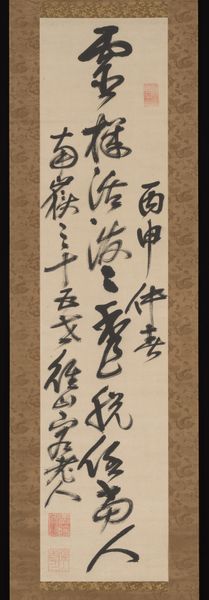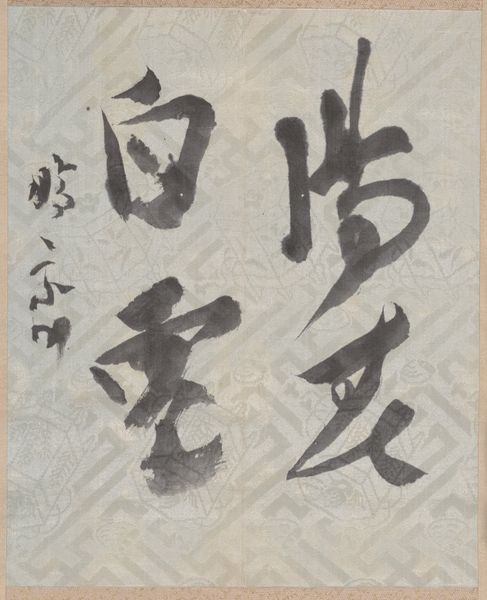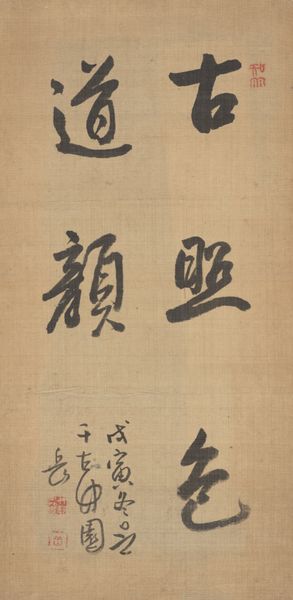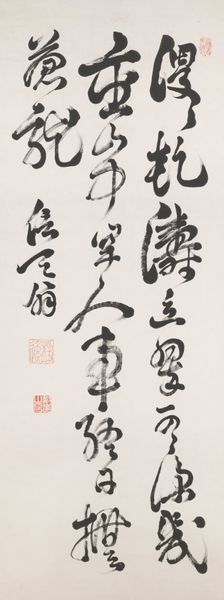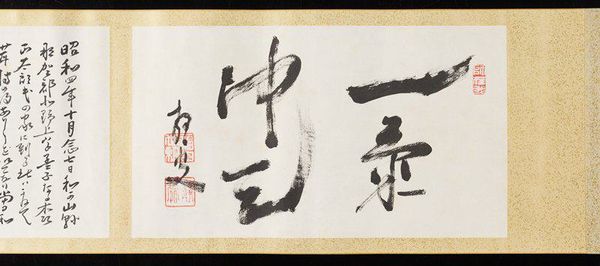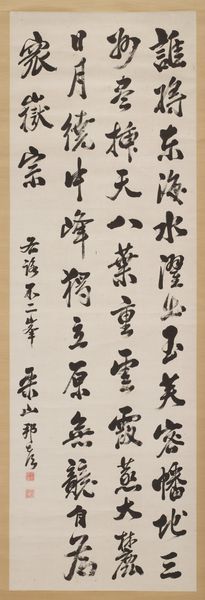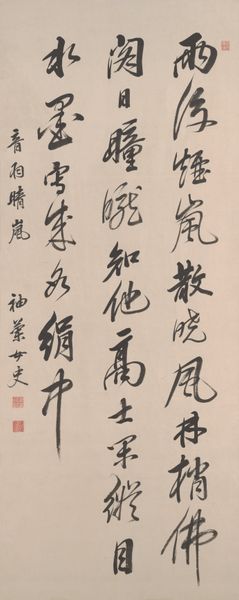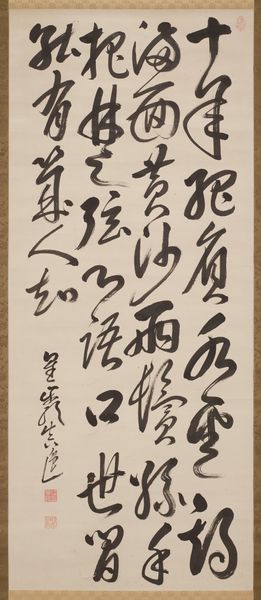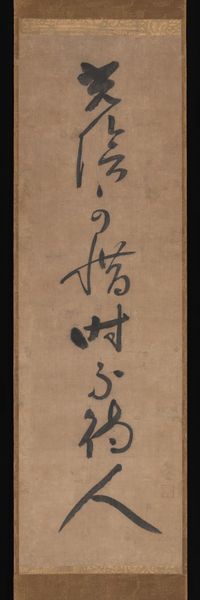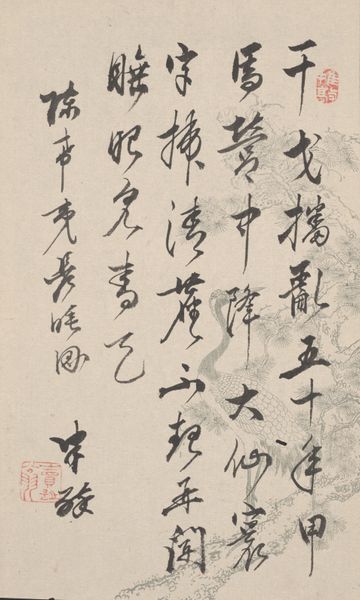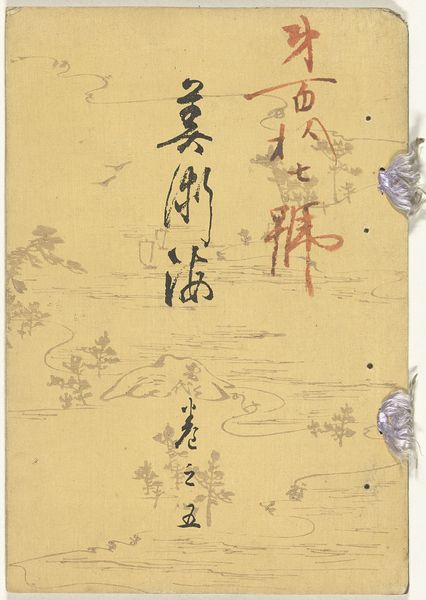
drawing, paper, ink
#
drawing
#
asian-art
#
paper
#
form
#
ink
#
line
#
calligraphy
Dimensions: Image: 57 11/16 × 17 5/16 in. (146.6 × 44 cm) Overall with mounting: 92 1/2 × 24 7/16 in. (235 × 62 cm)
Copyright: Public Domain
Soejima Taneomi created this calligraphic scroll in Japan, though we can't be sure exactly when. Calligraphy in East Asia isn't just writing, it's a high art form, deeply tied to philosophical ideas and social status. Taneomi was a prominent figure in the Meiji Restoration, a period of rapid modernization and political upheaval. The text itself, likely a poem or saying, is less important here than the act of writing. The brushstrokes, the ink's density, the composition – all reflect the artist's character and skill. The work also reflects institutions like the court and the civil service that, at the time, used calligraphy as a test of moral character. Understanding this work requires understanding its cultural and institutional context. What was Taneomi's role in society? What kind of training did he undergo? Examining historical documents, studying the conventions of Japanese calligraphy, and researching the Meiji Restoration can all reveal deeper meanings in this artwork. It offers a glimpse into a society undergoing profound change.
Comments
No comments
Be the first to comment and join the conversation on the ultimate creative platform.
